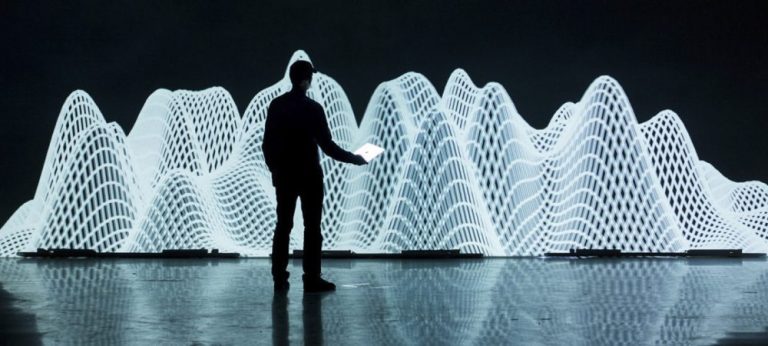In the evolving world of art and technology, digital art installations have emerged as an innovative medium to engage audiences in immersive, interactive experiences. These installations fuse elements of light, sound, and motion to create dynamic visual environments. Central to the success of such experiences are projection designers, whose technical and creative expertise helps transform spaces into captivating works of art. This article explores the essential role of projection designers in digital art installations, their creative process, and the skills that set them apart.
The Fusion of Technology and Art
Digital art installations represent a marriage between artistic expression and cutting-edge technology. Projection mapping, where visuals are projected onto three-dimensional objects or surfaces, is one of the most popular techniques used in this art form. Artists and designers utilize this technology to craft immersive experiences that transcend traditional art mediums, taking audiences on a sensory journey through light, motion, and color.
At the heart of this process are projection designers, whose role is to design and manipulate visual elements that align with the vision of the installation. Projection designers work closely with other artists, architects, and technologists to ensure that the projections not only complement the physical space but also enhance the viewer’s emotional response.
The Role of Projection Designers
Projection designers are responsible for the entire visual aspect of an installation. Their work typically begins with conceptualization—brainstorming ideas and experimenting with different projections that align with the artist’s vision. From there, they develop the visual narrative by carefully designing and positioning projections to create a cohesive experience.
A projection designer’s technical expertise is critical for bringing an art installation to life. They must understand the interaction between light, surfaces, and the environment, ensuring that the projection works harmoniously with the physical space. Whether it’s projecting onto a building, a sculpture, or a landscape, designers must account for surface textures, irregular shapes, and ambient light conditions.
In addition to designing the visual content, projection designers also play a pivotal role in selecting the technology and equipment needed to execute the installation. This includes selecting the appropriate projectors, lenses, software, and even considering the brightness and resolution needed to maintain visual clarity and impact. In many cases, designers collaborate with technical teams to ensure the installation runs smoothly from a logistical and operational standpoint.
The Creative Process of Projection Designers
The creative process for a projection designer typically follows a series of steps that mirror the overall project development process. Here’s a closer look at each stage:
- Conceptualization: Projection designers begin by understanding the goals and themes of the digital art installation. This may involve collaborating with the lead artist, curator, or production team to generate ideas and gather inspiration. During this phase, designers sketch out initial concepts and experiment with color palettes, textures, and patterns that fit the desired visual style.
- Storyboarding: Once the concept is in place, designers move on to storyboarding, where they outline the narrative flow of the projections. This stage helps clarify the sequence of visual elements, ensuring that the projections create a cohesive and engaging experience. Designers often use specialized software to preview how their projections will look on different surfaces and in various environments.
- Content Creation: With a storyboard in hand, projection designers begin crafting the visual content. This involves working with digital tools such as Adobe After Effects, Cinema 4D, or TouchDesigner to create animations, videos, and motion graphics. At this stage, designers also experiment with how light, shadow, and color can interact with physical surfaces to produce dynamic effects.
- Testing and Refinement: Before the final installation, designers conduct multiple test runs, adjusting the projections to fit the space perfectly. This phase often involves troubleshooting, as designers may need to tweak content based on feedback, environmental factors, or technical constraints. Designers collaborate closely with engineers to ensure the projections are properly aligned, calibrated, and timed with other elements such as sound or interactive components.
- Final Installation: The last step in the process is the physical installation, where designers oversee the setup of projectors, software, and equipment. They also ensure that the projections are running smoothly and that they enhance the intended sensory experience. Once the installation is complete, projection designers may continue to monitor and fine-tune the projection throughout the duration of the exhibition.
Skills and Expertise Required for Projection Designers
Projection designers require a unique blend of technical skills, artistic vision, and collaborative ability. Their expertise spans across multiple domains, including:
- Technical Proficiency: Projection designers must be well-versed in projection mapping software, digital animation tools, and graphic design. They also need a deep understanding of the hardware required for large-scale installations, including projectors, lenses, and light sources.
- Artistic Creativity: Since projection design is both a technical and artistic field, creativity plays a critical role. Designers need to think outside the box, experimenting with different visual techniques to create unique and engaging experiences. They must also have a keen eye for detail and color harmony.
- Problem-Solving Skills: Every art installation presents its own set of challenges, from irregular projection surfaces to unpredictable lighting conditions. Designers must have excellent problem-solving skills to adapt their content and ensure the installation runs seamlessly.
- Collaboration: Projection designers often work as part of a larger creative team, requiring strong communication and collaboration skills. They need to coordinate with other designers, engineers, and artists to ensure the installation comes together as envisioned.
Conclusion
Projection designers play an essential role in the creation of digital art installations, bringing to life visually striking and immersive experiences that captivate audiences. By blending technology with creativity, these designers push the boundaries of what is possible in the world of art. Whether it’s transforming architecture, reshaping natural landscapes, or crafting dreamlike environments, projection designers continue to redefine how we experience visual art in the digital age.

